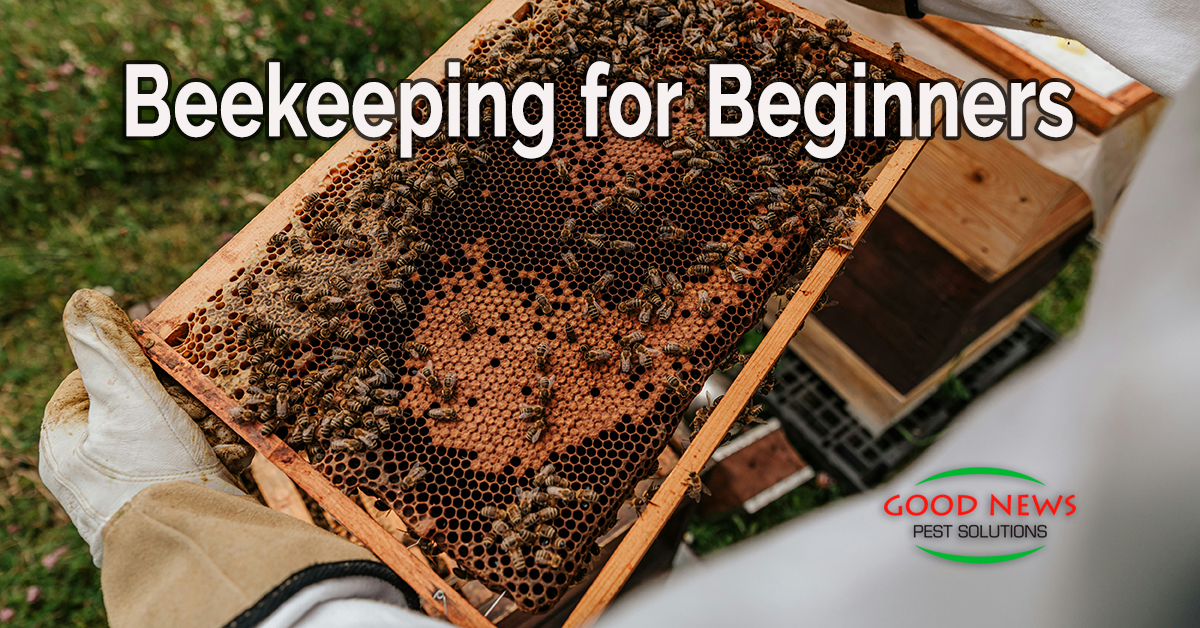
Beekeeping for Beginners
To bee or not to bee, that is the question. Whether 'tis nobler to suffer the stings and arrows of outrageous fortune… These violent delights have violent ends. The sweetest honey is loathsome in its own deliciousness. And in the taste destroys the appetite.
Okay, Shakespeare didn’t write Hamlet’s most famous soliloquy quite that way. Nor did Friar Lawrence from Romeo and Juliet pop up to warn us about the dangers of getting high on your own supply of honey or love.
But we thought it was an interesting way to broach the subject. So many people look for sustainable and organic ways to approach life – and what could be more organic and sustainable than raising your own bees for honey and other bee byproducts?
Bee-fore You Begin
A couple of words of caution. The very first thing you should determine is if you or anyone in your family is allergic to bees and their stings. Bees are not aggressive and do not attack people or animals. However, they will use their stingers when they feel threatened. And it has to be a significant threat too – the act of stinging is more painful for them than it is for you.
That may sound like your parent right before they discipline you, but it’s true. The way the stinger is designed, once it punctures our flesh, it doesn’t just detach. The very act of trying to pull the stinger out of someone it has stung literally rips the bee into pieces.
They don’t want to, but it is almost inevitable that a beekeeper gets stung – so make sure that’s not an issue.
The only bees with stingers are females, by the way.
Sacred and Bee-utiful
Bees are very economical when it comes to gender roles. Male bees are there for reproduction, and not even just for their own hives. You have probably heard that bees are social insects. In reality, only 9% of species are social – but they don’t just support their own community.
When male bees – also called drones – come of age, they leave the hive and go to a drone congregation area. Think of it like a bee singles club. When Queens want to mate, they’ll do a fly-by, and drones will follow them, attempting to do what they were designed for. Hundreds or even thousands of drones will approach the queen – not fighting, just hoping they’ll fly close enough to mate. 10-20 manage to do so. But the very act of passing on their genetic material in most cases ends their lives.
The goal is that the queen gets a diversity of drone DNA, but they almost never mate with drones from their own hives. Their male offspring is used for the sole purpose of helping other bee populations. And when resources get scarce? The drones are booted from the hive.
Worker bees are the life blood of the hive. They do all the work. All the pollinating, feeding the larvae, keeping the eggs and the hive warm or cool, cleaning and defending the hive, is done by the female worker bees.
Bee-ginning Your Journey
After you’ve educated yourself with classes, books, YouTube videos and connecting with your local beekeeping community, you’ll want to check local laws and ordinances – and your Homeowner’s Association rules, if you have one – and figure out the best location for your beehive.
An out of the way location in your yard is generally the best location to start a beehive. This way, the bees are relatively undisturbed. If you have neighbors, you may have to split the distance difference, so they and the bees get along.
You’ll want a place with a water source, not too much breeze, and accessible. Also consider possible predators. You don’t want your beekeeping journey to end before it begins.
You can either buy or build your own Langstroth beehive. These are the wooden containers for the beehives. They look a bit like a tall thin clothes dresser, complete with drawers, but can also be wide and higher up. And typically, you’ll want to elevate the structure on two by fours or some platform that keeps them from sinking into the ground during rainy season.
In Florida, all hives must have movable frames.
Florida beekeepers also have to register with the Florida Department of Agriculture and Consumer Services. You must follow best management requirements for maintaining European honey bee colonies on non-agricultural lands, as described in the Beekeeper Compliance Agreement, and be available for periodic inspections.
The form can be downloaded and the registration is typically triggered when you buy your first set of bees. For folks just starting out, registration and renewal cost about $10-20 each year.
Bee Fruitful and Multiply
These days, it’s much easier to start a bee colony. You simply reach out to an apiary and order either a package or a “nuc” of bees. A package is the most common way to start – you get a screened wood box filled with mostly worker honey bees and a queen. Some areas have large gatherings of beekeepers in the Spring. Everyone congregates in a designated park or parking lot and truckloads of bees are driven in and distributed.
Because we have such a long window of growing season here on the Gulf Coast of Florida, nucs are not usually necessary. Nuc = nucleus hive. The cardboard box you get acts like a temporary mini bee hive. You’ll find several frames of comb filled with honey, and each box comes with a mated queen and honey bees.
If you’re unsure where to pick up your honey bees, that’s where a beekeeping mentor or a local beekeeping group can assist.
Bee-ing in the Moment
We don’t have space to go into every step of the beekeeping and raising process – hence the recommendation of YouTube and local beekeeping groups. But once you install your bees in their new hive, you’ll want to keep an eye on them and keep a bee journal.
Every time you go out and inspect the hive, record all your observations. It’s important to do this often at first, in case you have a queen that’s not producing or you see an issue with the hive. The sooner you discover it, the easier it is to fix. Your first checks should be every 7-10 days, then you can spread them out to every two to three weeks. More often and you’re disturbing the hive.
Eventually, the best time will arrive – and you’ll be harvesting the honey, honeycomb, and other helpful by-products, and then the cycle starts over.
Once you find yourself responsible for a colony of growing, helpful insects – not to mention a food and potential income source – you’ll be more aware than ever of the dangers of most pesticide treatments.
Good News Pest Solutions strives for the greenest, most organic pest solutions available. We want to keep your family and pets safe, as well as the planet, and protect the pollinators essential to keeping our world agriculture alive and functioning.
Besides bees, moths and butterflies, mosquitoes are also top pollinators. That’s why we offer our exclusive Mosquito Protection Program. It turns biting mosquitoes into vegans. No more bites for your backyard BBQs, and it’s safe for everyone. For more details, please give us a call!
« Back to Blog
Proudly Serving
Sun City Center, Ruskin, Palmetto, Parrish, Ellenton, Bradenton, Anna Maria, Holmes Beach, Bradenton Beach, Longboat Key, Lakewood Ranch, University Park, Myakka City, Sarasota, Siesta Key, Osprey, Nokomis, Casey Key, Venice, Englewood, North Port, Port Charlotte, Punta Gorda, Arcadia
Things You Can Do
Pay Your Bill Online
Leave Us a Review
Request a Free* Termite Inspection
Stop Mosquito Bites
Get Rid of Rodents
Get a Termite Damage Warranty
Get Pest Control for Your Attic
Get Pest Control for Your Business Request Prayer
Corporate Address
1080 Enterprise Court, Ste A
North Venice, FL 34275
Call Now: (941) 412-9610
Text: (941) 412-9610
Fax: (941) 412-0080
